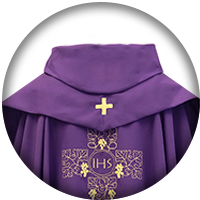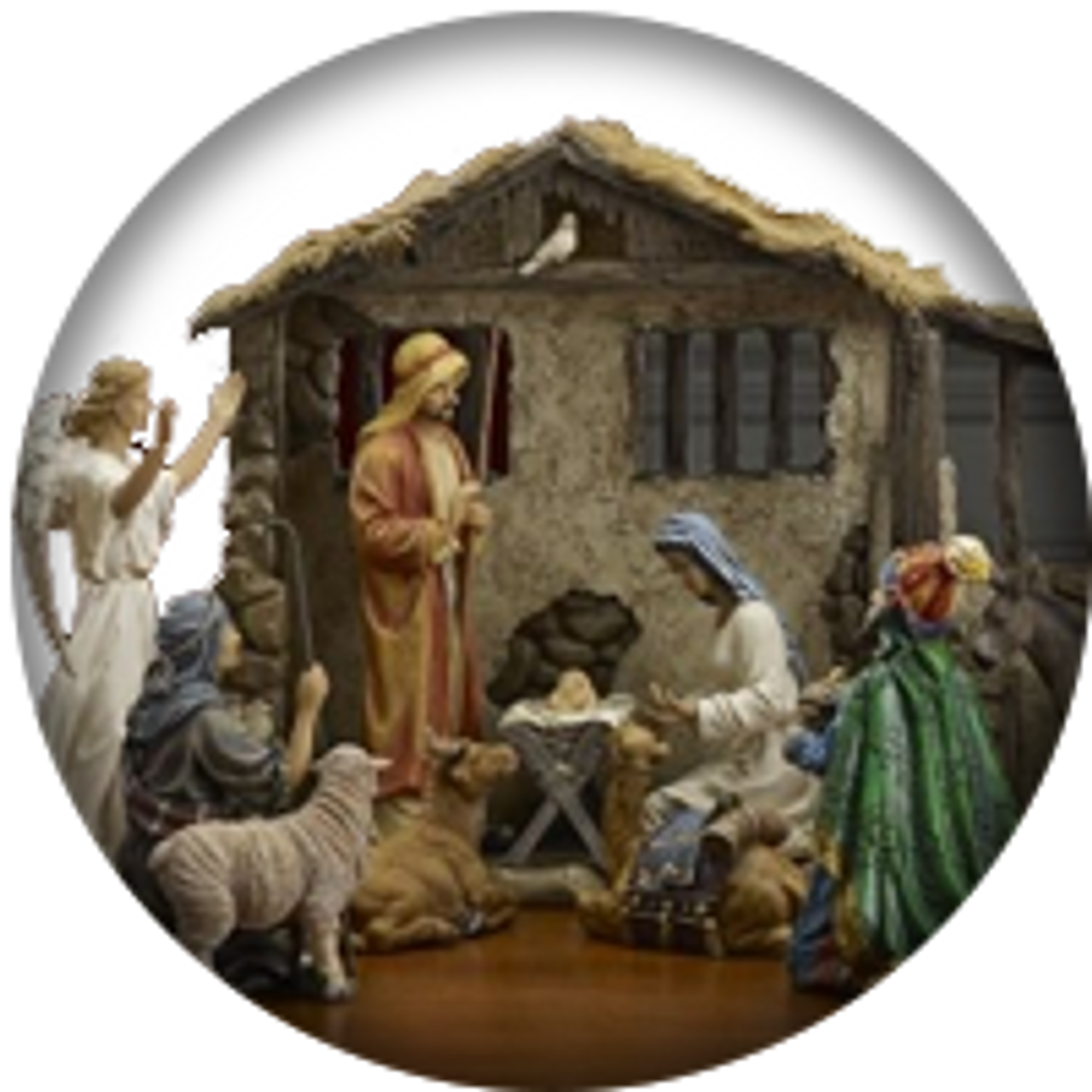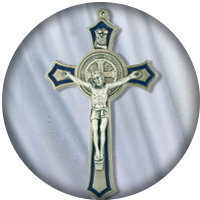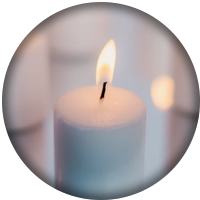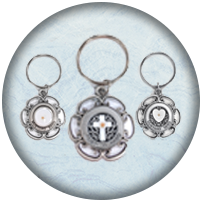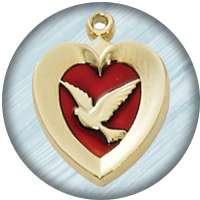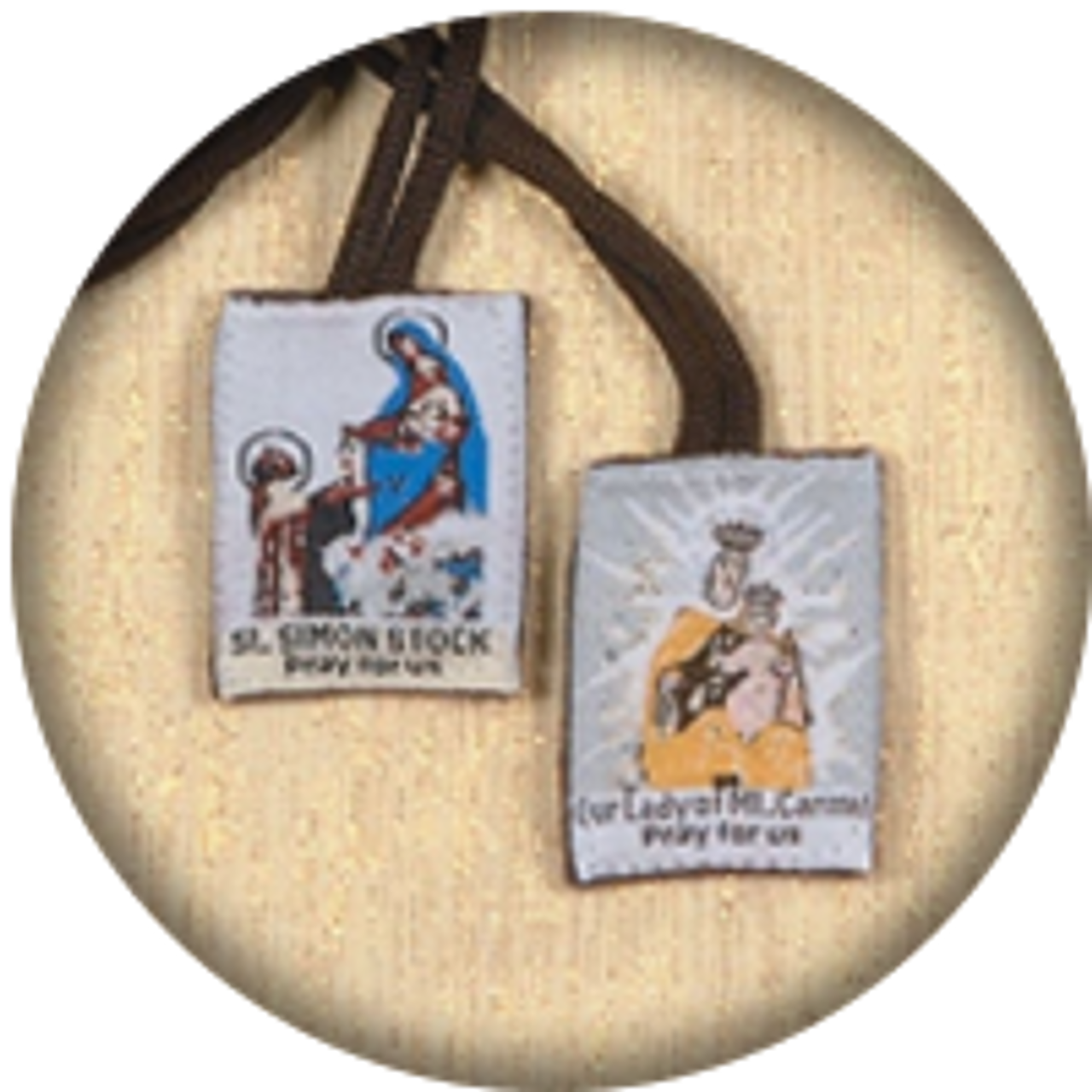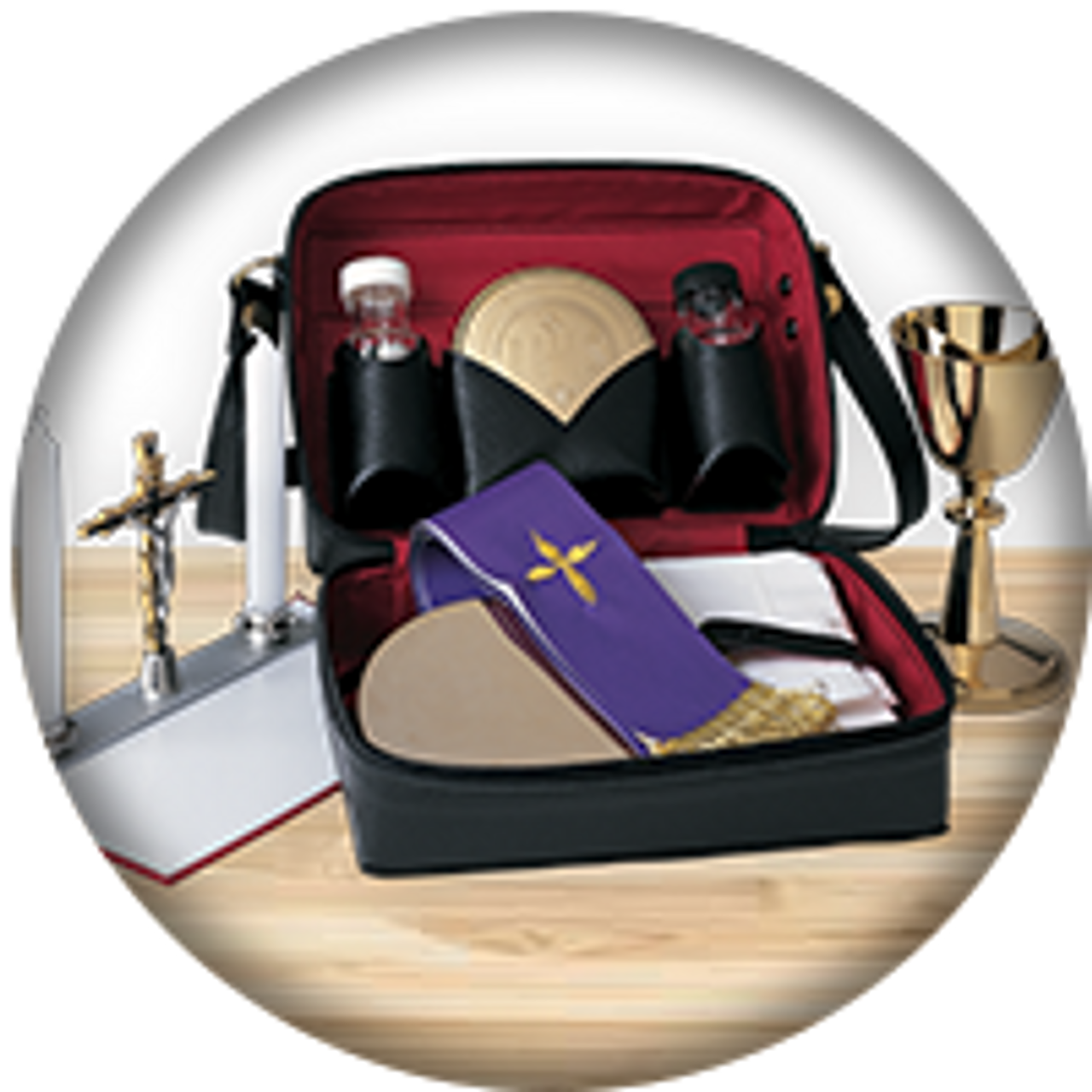ST ANDRE’ BESSETTE, PART II
Kathy Boh on 14th Jan 2016
ST ANDRE’ BESSETTE, PART II
(1845-1937)
Last week, we published Part I of the article on St. Andre' Bessette. It covered his early life before the age of 25, and previous to his entering the Congregation of the Holy Cross in Canada, near Montreal. This week, we continue his story where we left off, right up until his recent canonization in present times.
LIFE IN THE CONGREGATION OF THE HOLY CROSS
Alfred came to the Congregation of the Holy Cross with the strong recommendation of his parish priest, Father Provencal--who described him to the Brothers as a "saint". It was in the novitiate and in his training there that he learned, finally, to read well. Again, however, he experienced health struggles, and even missed taking his temporary vows.
When he found out that some in the community were hesitant to allow him entrance, he, of course, continued to pray. The bishop of Montreal, Bishop Bourget, came to the college one day, and Andre' found an opportunity to speak to him. He threw himself on his mercy. Brother Andre’ passionately explained his need and desire to serve humbly as a member of this Congregation. The bishop listened and was impressed by his conviction, and assured him that he would be allowed to become a professed member. Brother Andre’ took his final vows on August 22, 1872. Later, Brother Andre’ joked,
"At the end of my novitiate, my superiors showed me the door, and I stayed there for forty years." *1
THE DOOR MAN… BROTHER ANDRE’ AS PORTER
That brings us to the “place” that ended up being so instrumental in God’s calling and graces manifested in Brother Andre’s life. Instead of ending up “out the door”, Brother Andre’ was assigned to the door. His job primarily was that of “porter”. Besides greeting and welcoming all guests and visitors (and connecting them with whomever they came to visit), he also had other jobs. Brother Andre’ delivered mail, brought in firewood, cleaned (floors, windows, etc.), and provided “wake up calls” for those at the school.
Brother Andre’ eventually became the school barber. This gave him the opportunity to discuss life and his Lord with the students. Additionally, it enabled him to put aside the small charges earned cutting hair towards his dream and earthly passion: to build a shrine to St. Joseph… but more about that later…
Brother Andre’ found the door-keeper position opened up some great opportunities that God seemed to have planned for him. We know that God’s hands are not tied by some of the limits that we find on earth. They offer opportunities in and of themselves…as God both guides and is made present in the midst of it all. St. Paul converted a jailer and his family by becoming, himself, an inmate [Acts 16]. When bitten by an extremely poisonous snake on the island of Malta, he simply shook it off and converted some more unbelievers [Acts 28].
Brother Andre’ believed what Christ said and did in the gospels. Memorization of scripture was required of the brothers—particularly the Sermon on the Mount. Brother Andre’, however, later gladly memorized all four evangelists’ versions of the passion. He took all this to heart—not just memorizing with his mind, but highly valuing the message, and keeping the words in his heart. He was willing to forebear his own physical suffering, and some harsh treatment that he reportedly underwent from a superior at the college. He believed in the power of the passion and cross of Our Lord. (We will say more about the “cross” later in this article.)
PRAYERS, MIRACLES AND WINNING SOULS
The pain and struggles of this prayerful, devoted Brother were used by God to form in him compassion, understanding, and sensitivity to others. This included the many he saw regularly at the school, and those who showed up at his door, and those to whom he ministered and visited outside of the school campus. It made him glad to see the Lord touch the lives of those whom he met daily. His willingness, kindness and smile did not reveal the stress or toll such encounters had on him, but he did suggest in rare comments that it was difficult—more than his uplifting demeanor seemed to indicate.
MIRACLES
As his prayers for people continued, and answers brought about healings, this soon resulted in miracles that became more and more difficult to keep quiet. At first, it was just the students at the school. Then word spread more widely as those touched began to excitely talk about it. But his contact with the public at the porter’s door gave him more and more exposure to those who were also sick outside of the school, and in the community.
Both within the school (among the Brothers and students) and within the local community he was most often respected and appreciated. However, this was not always the case. There were those who were jealous of his success and reputation. Some had issues with the medical and professional ramifications of the healings and Brother Andre's involvement. There was some conflict with at least one healthcare professional attending the school.
History—starting with the prophets long ago—has proven that what is “good” and “of God” will always have detractors and opposition. Despite complaints to school officials, his religious superiors, local health officials, and other parents of school children, his holy work continued. Eventually, Bishop Bourget—again, positively and effectively—intervened in his life, speaking to his superiors and recommending that they let Brother Andre’ continue, saying that the work would prosper if God was behind it. If not, it would fail.
FAITH, HUMILITY AND LOVE
Prayers, visits to the sick in the evening, and increasing requests from those in nearby homes and towns kept Brother Andre’ busy. It eventually became akin to a full-time job to minister like this—in addition to his other responsibilities. Always it was God and St. Joseph whom he passionately credited with the miracles of healing the sick. He denied having a gift himself, although he was a man of deep and continuous prayer.
From his own experience of the priority of faith and humility, and the practice of these fruits in action, he recognized—even during the prayers for healing of the sick—that the primary need for others, too, was for these deeper things… especially the importance of faith.
Brother Andre’ made it clear that it was, above all, faith that was the most important objective of his prayers and involvements with those who came to him for help. It was not just a natural compassion or the desire to relieve suffering. Brother Andre’ wanted to see increased devotion to the Lord and St. Joseph. He actually believed so much in the value of suffering with the passion of Jesus that he told some to rejoice in the opportunity, for it would increase their own sanctification.
And, of course, the heart of it all was love. He said: “God is love, and he loves us; that is the heart of the Christian faith. “ *2 St. John the Evangelist said, “God is love, and whoever remains in love remains in God and God in him… We love because he first loved us.” [1Jn 4:16,19]
Besides the humility and faith that covered his life, the basic cornerstones of loving kindness and merciful compassion were foundational in the life of Brother Andre’. His heart was stirred (sometimes with tears shed) upon hearing stories of need and physical devastation and illness. He listened to those burdened by grief and pain with an open and sensitive heart, and a ready prayer—and frequent healings. Continually, his prayer, encouragement and consolation were uplifting to those who came to him. (To those who knew him more intimately, his sense of humor and joy were further boosts to their spirits.)
MANIFESTATION OF A DREAM: THE ORATORY SHRINE TO ST. JOSEPH
From age 59 (in 1904) to his death at age 91, Brother Andre’ had another deep interest that consumed his heart, time, and activity. It was to build a shrine to the saint with whom he spent so much time in conversation—St. Joseph. Before that time, he kept it in his heart and in prayer, seeking God’s direction and provision and timing. He spoke of it only to close friends, and, with some exception, on other rare occasions to suggest the idea of honoring St. Joseph.
Then—starting with a few hundred dollars from the nickel haircuts and some donations—he built a small, 15 foot by 18 foot wooden building. It was constructed on nearby Mount Royal, which the Congregation had purchased to protect the location from being bought by more secular entertainment interests. This was a decision made with the school boys in mind, to continue to provide for them a healthy and good environment.
Influencing this purchase—according to Brother Andre’—were the many prayers prayed actually on the land (as he sometimes walked and prayed), and the St. Joseph medal buried on the property. Three years later, with a little more money, he requested further construction. The Archbishop only stipulated that he not go into debt to do it. Additional building was done in 1908 and 1910. In 1909, it was big enough with enough visitors to require a full-time attendant, which Brother Andre’ gladly became.
His building project is a story in itself, and it is a long and complicated saga. In 1917, plans for a new church that could hold one thousand people were put in place. When the Depression hit (during the 1930’s), funds were even more limited, and by that time, the basilica was still in process—a very large basilica at that. While he was very sick, and 90 years old, he had some helpers put a statue of St. Joseph in the partially finished construction site when the bishop became concerned about damage to the un-roofed building. He figured that if St. Joseph—signified by the statue—wanted a roof over his head, he would see to it. The “minor” basilica was finished in 1955, and the large edifice now in existence was completed in 1966. Yet, from the beginning of the century, visitors and pilgrims came.
Even the attention that Brother Andre’ did receive later in life brought with it more problems—not power and prestige as the world usually gives with notoriety. However, his beloved St. Joseph did benefit in that his shrine could receive contributions. Word spread among the sick who needed prayer and a touch from God—so they, too, benefited from the proliferation of stories and the spreading of the “word” about Brother Andre'.
MORE MIRACLES
The United States—in which he had lived and worked during the time before his entering the Congregation—became a place of travels and fund-raising for the Oratory of St. Joseph. Not only did he acquire funds, but his reputation here became known. There are many reported miracles resulting from Brother Andre's prayers during his time in the U.S. Upon his death, there were even special trains specifically designated for travel to his funeral from several northeastern states.
LIVING THE CROSS… HEADING TOWARD HEAVEN
Andre’ was devoted to the cross of Jesus Christ, not just because his religious order was the Congregation of the Holy Cross, but because he knew what it was, personally, to live “being crucified to Christ” and letting God’s life and love reign in him.
[Gal. 2:19-20 “I have been crucified with Christ, yet I live, no longer I, but Christ lives in me… I live by faith in the Son of God who has loved me and given himself up for me.”]
Along with his great personal devotion to St. Joseph (as a saint and an intercessor before God for others), Andre’ recognized the power of the crucified and risen Lord Jesus, who gave His followers the Holy Spirit, and told them to do the works that He had done. Andre’ believed this and let the power of God work through him as God led him.
DYING
In dying, and in the midst of great pain, he saw himself as the “grain of wheat” that Jesus spoke of in the gospel of John. He had lived as a humble “grain of wheat”, suffering continually physically, and dying to much of worldly power or honor for the many years before his name became increasingly known.
He gladly took the less visible and often less recognized positions of doorman, message carrier, maintenance man, caregiver, listener, intercessor…etc. (His intercessory prayer for others that was such a mark of his ministering—both openly and in his quiet prayer life—became the sure conviction, as his life drew to a close, that he could serve well as an intercessor when he went to heaven.) He truly cared about and ministered to the “least of these”.
Brother Andre’ died on January 6, 1937 at age 91. News reporters in Canada and the U.S. show thousands of people visiting his wake and attending his funeral and burial. His body was not embalmed, yet lay in state for almost a week.
SAINTHOOD AND ON-GOING MIRACLES
The Church formally recognized Brother Andre’ as a saint on October 17, 2010. Pope Benedict XVI made the announcement.
Today, one can visit the basilica on Mount Royal and find his tomb, which many visit to receive healing. But Brother—now “Saint”—Andre’ would say: the gift was not in himself, but given through intercession to St. Joseph… who, in turn, would give the glory to the power of the death and resurrection of Jesus Christ Himself… and the magnanimous mercy of Almighty God.
FOOTNOTES:
*1 CATHOLIC ONLINE, St. Andre Bessette
http://www.catholic.org/saints/saint.php?saint_id=18
*2 BROTHER ANDRE—HIS LIFE AND TIMES—1845-1937
https://www.ewtn.com/library/mary/broandre.htm

